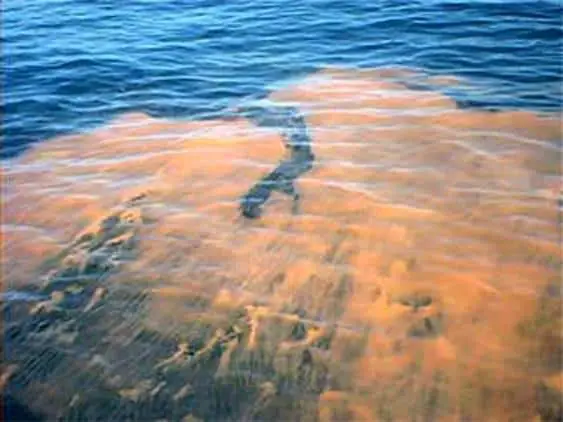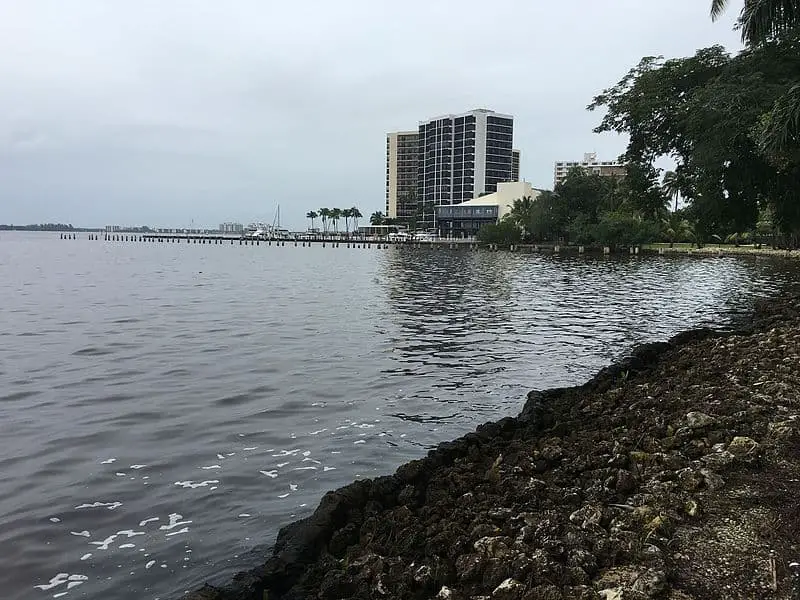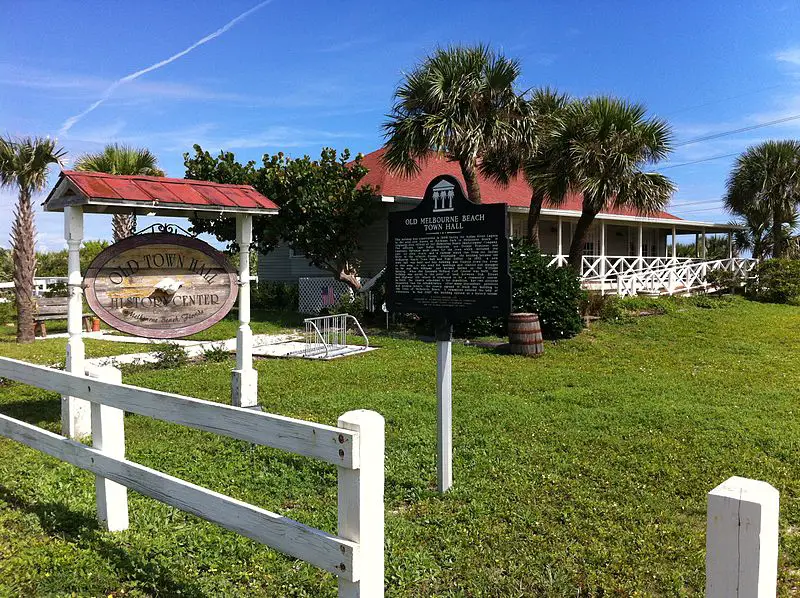What beaches have red tide in Florida? Red tide is a natural phenomenon that occurs when high concentrations of certain algae bloom in the water.
Many are affected by this phenomenon.
These blooms can produce toxins that can be harmful to people, fish, and other marine life.
These beaches are affected by this bacterial bloom, which has a long history off the gulf coast.
In Florida, red tide typically occurs along the Gulf Coast from late summer through early fall. However, it can occur at any time of year and last for several months.
Red tides are caused by industrial agriculture, animal waste, and groundwater runoff. To understand what causes red tide, you should know how they affect the beaches in Florida. In this article, you will learn about some of the most common culprits.
Beaches with red tide often have a strong, unpleasant odor and the water may appear discolored.
Swimming in water with the red tide can cause skin irritation, coughing, and sneezing.
In severe cases, it can cause difficulty breathing and even death. If you are planning to visit a beach in Florida, it is important to check for advisories about red tide conditions before you go.
The following beaches have had Red Tide in Florida over the recent years:
- Pinellas County: Clearwater Beach, Sand Key Park, Sunset Beach
- Hillsborough County: Ben T. Davis Beach, Picnic Island Beach
- Manatee County: Anna Maria Island, Longboat Key
- Sarasota County: Siesta Key Beach, Lido Key Beach
- Charlotte County: Englewood Beach, Port Charlotte Beach
- Lee County: Bonita Beach, Fort Myers Beach, Sanibel Island
- Collier County: Barefoot Beach, Vanderbilt Beach
Red tides occur continuously off the Gulf Coast of Florida
When red tides form in the Gulf of Mexico, algae and other harmful substances build up. These substances, known as dinoflagellates, live in lakes, rivers, and estuaries and are abundant in the Gulf.

Karenia Brevis, a particular type of dinoflagellate, is responsible for the toxic blooms in Florida. The algae have an inflammatory effect on fish and other marine life.
While red tides occur naturally in the Gulf of Mexico, recent studies have shown that human activity is making the problem worse.
One recent study showed that nitrogen-enriched streams in the Gulf of Mexico contribute to the development of red tides.
Additionally, red tides are spread by coastal waters and can be carried into the Atlantic Ocean as far north as Delaware.
Red Tides are caused by Industrial Agriculture
Agricultural runoff from crops and fertilizers contributes to the bloom of algae in the Gulf. Agricultural runoff has been found to contain excessive amounts of nutrients, which make algal blooms even more toxic.
Despite the fact that it has caused a number of red tides, Florida’s agriculture industry isn’t subjected to harsh penalties for polluting waters.
It simply dumps fertilizer into the waterways and runs off into rivers, estuaries, the gulf, and the Atlantic.
Agricultural runoff is the primary cause of red tides. The red color is caused by the accumulation of microscopic organisms known as dinoflagellates.
These organisms live in rivers, estuaries, and lakes.
In Florida, the red tide is caused by a particular dinoflagellate called Karenia Brevis. Its presence in coastal waters is detrimental to human health and to the ecosystem of fish and wildlife.
Animal Sewage Causing Fish Devastation
A toxic bloom of animal sewage has been killing fish in the Gulf of Mexico and the Tampa Bay area for years. It is extremely harmful to human health and devastating for fish populations.

Now, after Hurricane Michael devastated the Panhandle of Florida, many locals are worried about the red tide in Florida. The Surfrider Foundation is sending condolences to all who have lost their homes, water, and power in the region.
While scientists and lawmakers have not fully solved the problem, a legal approach to red tide control is a good start.
Florida’s state legislature has a mandate to protect the environment, and its governor has stated red tides are an urgent priority for the state.
This way, the state can lead the way by preventing future outbreaks of contaminated waters that are so detrimental to human health.
However, it is difficult to enforce laws and mandates, especially when a problem has only been detected recently.
Groundwater runoff and red tide-infested water
Water quality is a growing concern in Florida, a state that depends on its coasts and natural environments for its economy and culture.
Recent outbreaks of harmful algae, including red tide in Florida, have posed a public health threat and canceled vacation plans for many tourists.
The blue-green algae that cause red tide in Florida is an extension of the widespread problems caused by nutrient pollution, which is responsible for the proliferation of this type of algae.
The presence of red tide-infested water is often the result of runoff from freshwater.
Historically, the concentrations of red tide were thirteen to eighteen times higher than they are today, with most outbreaks occurring during the fall, winter, and spring months.
However, recent observations indicate that the amount of red tide on the coast is still relatively low compared to the levels that were seen during the most recent red tides.
Phytoplankton
Phytoplankton on Florida beaches is responsible for the noxious effects of red tide.

They are microscopic algae that multiply to create massive blooms.
These blooms can kill fish and cause respiratory and skin irritation in humans. They are also a major source of pollution in our waterways. They are not easily visible from space but are highly toxic to fish and other aquatic life.
The red tide bloom is caused by the presence of dinoflagellates, microscopic plants that have developed defenses against herbivores.
These algae release toxic compounds when disturbed.
These dinoflagellates are present in the Gulf of Mexico all the time.
They are typically in low numbers and do not cause harm to human health. However, conditions that encourage the growth of these organisms and reproduction are necessary for a red tide bloom.
Symptoms of a Red Tide in Florida
The symptoms of red tide poisoning range from dizziness and nausea to vomiting and diarrhea.
Some people will experience neurological symptoms such as seizures, confusion, and respiratory symptoms, while others may experience muscle and nerve aches similar to the flu.
Depending on the severity of red tide poisoning, the symptoms can be mild or severe, and they can take several days to manifest. People with respiratory diseases or other illnesses are especially susceptible to red tide reactions.
- If you are sensitive to red-tide toxins may experience coughing, sneezing, and tears in your eyes. Breathing red-tide water can also cause eye and skin irritation.
- If you have respiratory conditions, especially asthma should avoid swimming in red tide-affected areas.
- You should also stay indoors in A/C-heating environments and seek medical attention if symptoms worsen or do not go away after a few hours.
In Conclusion…
Red tide in Florida is a serious problem that has negative impacts on human health and the economy. The state is working to prevent future outbreaks of red tide, but it is difficult to enforce laws and mandates.
Groundwater runoff from agricultural and urban areas is a major source of pollution for red tide blooms. Phytoplankton on Florida beaches is responsible for the noxious effects of red tide, which can cause respiratory and skin irritation in humans.
The symptoms of red tide poisoning range from dizziness and nausea to vomiting and diarrhea. People with respiratory diseases or other illnesses are especially susceptible to red tide reactions.
If you are sensitive to red-tide toxins, you should avoid swimming in red tide-affected areas and stay indoors in A/C-heating environments.
Seek medical attention if symptoms worsen or do not go away after a few hours.
The red tide bloom in Florida is caused by the presence of dinoflagellates, microscopic plants that have developed defenses against herbivores.
The state of Florida is working to prevent future outbreaks of this harmful algae bloom.








